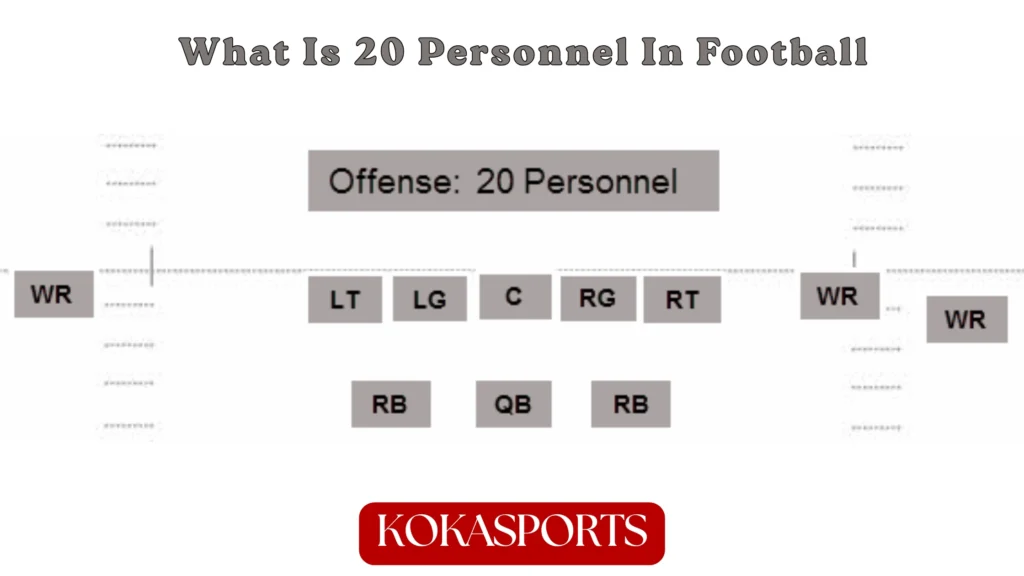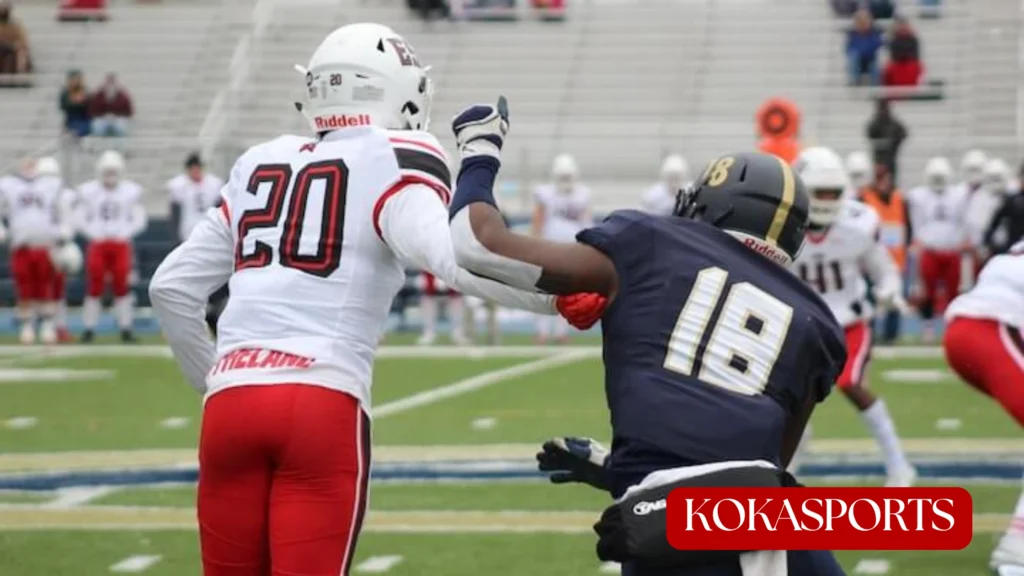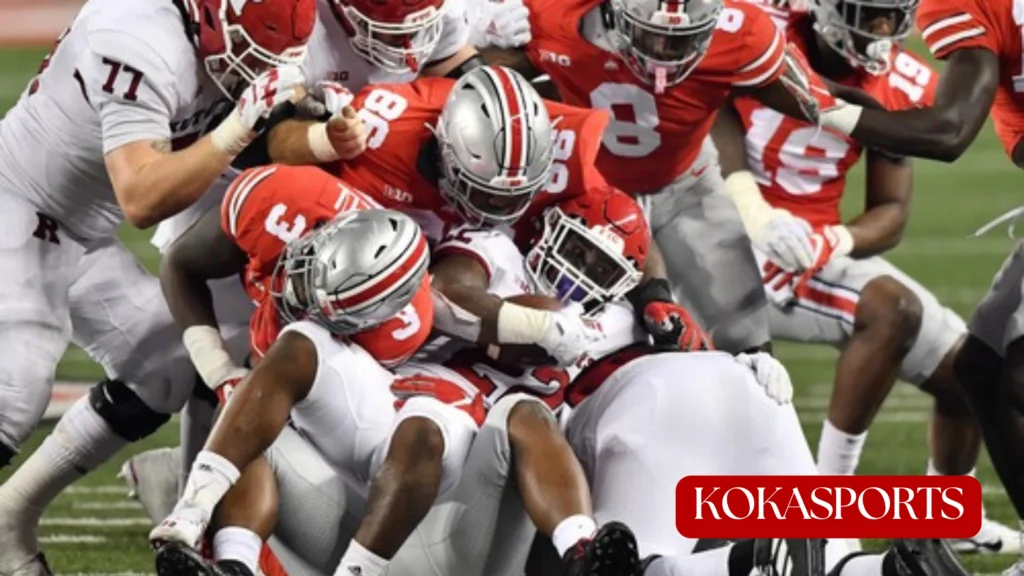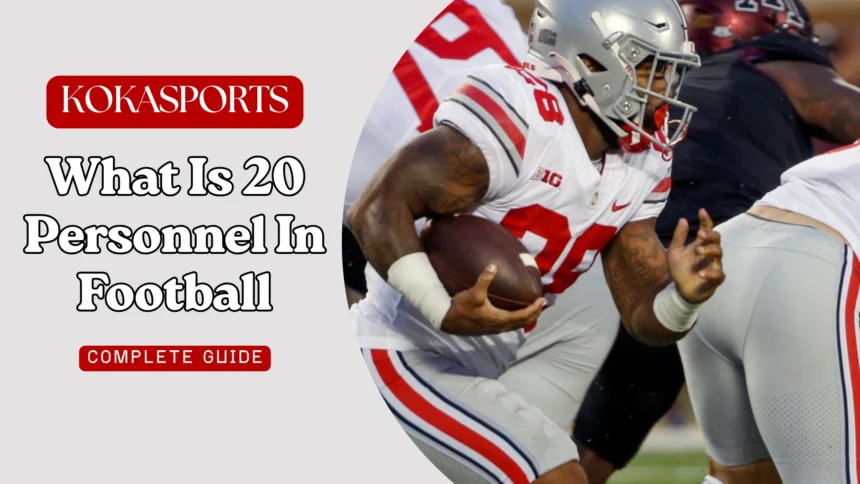Introduction
Offensive personnel groupings are essential to modern football strategy. What is 20 personnel in football? 20 personnel in football refers to a specific package featuring 2 running backs, zero tight ends, and three wide receivers. While less common than 11 personnel in today’s NFL, this package creates unique matchup advantages for teams with versatile running backs.
Personnel packages shape play-calling across the NFL and college football. The choice between running backs, tight ends, and wide receivers fundamentally alters what an offense can accomplish before the quarterback even snaps the ball.
The Basics of Offensive Personnel
The term “offensive personnel” describes which skill position players take the field beyond the quarterback and five offensive linemen. The numerical system uses two numbers: the first number represents running backs, while the second is the number of tight ends. Remaining spots go to receivers.
For example, 12 personnel means one running back, two tight ends, and two wide receivers. This efficient system allows instant communication during fast-paced games.
Personnel groups differ from formations. The personnel package tells you which types of players are on the field, while the formation describes where they line up. The same 20 personnel can run multiple formations—shotgun, pistol, or spread.
Read Also: What is 13 Personnel in Football? NFL Offensive Personnel Packages & Groupings
What is 20 Personnel in Football?

20 personnel features two running backs, zero tight ends, and three wide receivers alongside the quarterback and offensive line. This creates a unique blend of run game power through two backs while maintaining spread capability.
This package differs from common offensive personnel packages. Unlike 11 personnel which uses one running back and one tight end, the 20 package doubles down on running back versatility while completely removing tight ends on the field.
Teams typically deploy 20 personnel from shotgun or pistol formations, taking advantage of backfield flexibility. One back might line up beside the quarterback while another splits wide, creating confusion for defenders at the line of scrimmage.
The absence of a tight end represents the defining characteristic. Traditional NFL personnel groupings heavily feature tight end play, making this package unconventional. Teams choosing 20 personnel prioritize speed and space over blocking versatility.
Breaking Down the 20 Personnel Package

The Role of Two Running Backs
The two running backs offer tremendous versatility. Traditional versions featured a fullback and tailback, with the fullback as a lead blocker. Modern versions use two halfbacks capable of running, receiving, and blocking.
This dual-running back setup creates matchup advantages. Defenses must account for both backs as potential ball carriers on every run play. When running backs split out wide, linebackers face challenging coverage assignments against faster opponents.
Both backs must be three-down players—capable of pass protection, route running, and rushing. The number of running backs directly impacts how defenses align and which personnel they counter with.
Zero Tight Ends Creates Challenges
Having zero tight ends dramatically alters offensive capabilities. Traditional tight end roles include inline blocking, serving as an extra blocker in protection, and functioning as security valve receivers in the passing game.
The offensive line bears more responsibility without a tight end helping on the edge. Pass protection becomes challenging against aggressive rushers who normally face chip blocks from tight ends.
The number of tight ends impacts seam routes and middle concepts. The 20 package compensates by using running backs and receivers to attack these areas, but timing and spacing change without a traditional tight end target.
Three Wide Receivers Spread the Defense
With three wide receivers on the field, 20 personnel maintains legitimate spread offense capabilities despite featuring two backs on the field. These receivers stretch defenses horizontally and vertically.
Wide receiver alignment varies significantly. Teams might stack all three wide receivers to one side or spread them across the formation to maximize spacing. This forces defenses into difficult personnel decisions.
Base defenses with extra linebackers struggle covering receivers on the field, while nickel packages featuring additional defensive backs become vulnerable to power running with two running backs.
Why Teams Use 20 Personnel
Advantages
The primary advantage involves creating favorable matchups. When two running backs split out wide, defenses choose between leaving linebackers in coverage or subbing in more defensive backs, weakening run defense.
This personnel package keeps defenses guessing. With two backs and three wide receivers, offenses can effectively run the ball or throw the ball from identical looks. Play-action becomes particularly effective.
Speed and spacing represent another benefit. Unlike packages featuring tight ends on the field, the 20 package prioritizes speed at every position. All five skill position players can threaten defenses vertically, preventing defenses from loading the box.
Modern running backs make this viable. Today’s backs blur the line between running back and receiver, making defenses account for them anywhere on the field.
Disadvantages
Pass protection represents the biggest weakness. Without a tight end providing an extra blocker, offensive linemen must handle aggressive fronts with less help. Against elite rushers, this vulnerability can prove fatal.
Short-yardage situations expose another limitation. While two running backs provide power, the absence of big bodies at tight end reduces push at the point of attack. Most teams prefer 22 personnel when they need guaranteed yardage.
The specialized nature limits frequency. Modern NFL offenses heavily feature tight end usage, making it difficult to abandon this position for extended periods.
Comparing 20 Personnel to Other Packages

20 vs 21 Personnel
21 personnel features two running backs and one tight end with two wide receivers. This represents a more traditional approach with better blocking capability.
Teams choose 21 personnel when they want two running backs while improving blocking. The one tight end provides an additional blocker on runs. The San Francisco 49ers occasionally utilize this in their diverse scheme.
20 vs 11 Personnel
11 personnel is the most common personnel group in today’s NFL, featuring one running back, one tight end, and three wide receivers. This appears on roughly 60% of offensive plays.
11 personnel offers superior blocking flexibility through the tight end while maintaining spread capabilities. However, 20 personnel creates unique matchup problems when both running backs function as receivers.
20 vs 12 Personnel
12 personnel features one running back and two tight ends with two wide receivers. This package prioritizes blocking and physicality over speed.
Teams called 12 personnel particularly effective for establishing the run game. With two tight ends providing extra blockers, offenses create numerical advantages. The choice between 12 and 21 versus 20 reveals coaching philosophy.
20 vs 22 Personnel
22 personnel uses two running backs, two tight ends, and one wide receiver—the heaviest common package. This appears in short-yardage and goal-line situations.
The contrast is stark. Where 20 personnel spreads defenses with three wide receivers, 22 personnel creates a phone booth fight with big bodies at the line of scrimmage.
20 vs 10 Personnel
10 personnel features one running back, zero tight ends, and four wide receivers—maximum spread. 01 personnel (zero backs) and even five wide receivers push spread concepts further.
The difference involves trading a receiver for an additional running back. Teams choosing 10 personnel accept weakened protection for maximum receiving threats.
20 vs 13 Personnel
13 personnel uses one running back and three tight ends with zero wide receivers—an ultra-heavy package for obvious running situations.
This serves as the polar opposite of 20 personnel’s philosophy. Where 20 personnel removes tight ends to maximize speed, 13 personnel commits fully to tight end usage.
Examples in the NFL and College
The 20 personnel package appears less frequently in today’s NFL compared to previous eras. However, certain situations and teams still deploy this grouping effectively.
NFL teams with multiple versatile running backs occasionally utilize 20 personnel for specific matchups. When both backs can line up in the slot as credible receiving threats, defenses face challenging coverage decisions.
College football sees more frequent usage, particularly in spread systems. The Patriots under Tom Brady occasionally used modified versions, though they preferred Rob Gronkowski and other tight ends on the field.
How Defenses Adjust
Defensive coordinators face interesting challenges with 20 personnel. The combination of two running backs and three wide receivers creates matchup problems.
Base defenses with extra linebackers become vulnerable when running backs split out as eligible receivers. Conversely, nickel defenses with additional defensive backs sacrifice run-stopping ability.
Many coordinators prefer facing 20 personnel because the absence of a tight end weakens pass protection. Aggressive edge rushers can attack without worrying about chip blocks.
The Future of 20 Personnel
The prevalence of 20 personnel continues declining as teams favor 11 personnel as their base package. The versatility that one tight end and one running back provide together outweighs specific advantages for most coordinators.
However, as more backs develop elite receiving skills, the value of having two backs who function as receivers increases. If running backs continue evolving toward hybrid players, 20 personnel could experience resurgence.
The rise of nontraditional formations suggests potential for innovation. Modern offenses blur position distinctions, making traditional personnel group classifications less meaningful.
Conclusion
20 personnel represents a distinct approach within football offensive personnel packages, featuring two running backs, zero tight ends, and three wide receivers. While less common than 11 personnel or 12 personnel, this package offers specific advantages for teams with versatile backs.
The strategic value lies in creating matchup problems through running backs who threaten as runners and receivers. Coaches who master offensive personnel groupings gain significant advantages by manipulating defensive personnel decisions.
For fans, players, and coaches, knowing football offensive personnel systems provides deeper appreciation for strategic elements. The decision to use two running backs versus one running back, or zero tight ends versus two tight ends, fundamentally shapes what offenses accomplish and how defenses respond.
The 20 personnel package exemplifies how personnel groups serve as the foundation for all offensive strategy, connecting roster construction, play design, and in-game adjustments to force defenses into difficult decisions on every snap.
FAQs
What is 21 personnel in football?
21 personnel features 2 running backs, 1 tight end, and 2 wide receivers on the field.
What is a 20 personnel in football?
20 personnel features 2 running backs, 0 tight ends, and 3 wide receivers on the field.
What position is 20 in football?
There is no specific position numbered “20” in football—20 refers to a personnel package with 2 running backs and 0 tight ends.
What is 22 personnel in football?
22 personnel features 2 running backs, 2 tight ends, and 1 wide receiver on the field.




